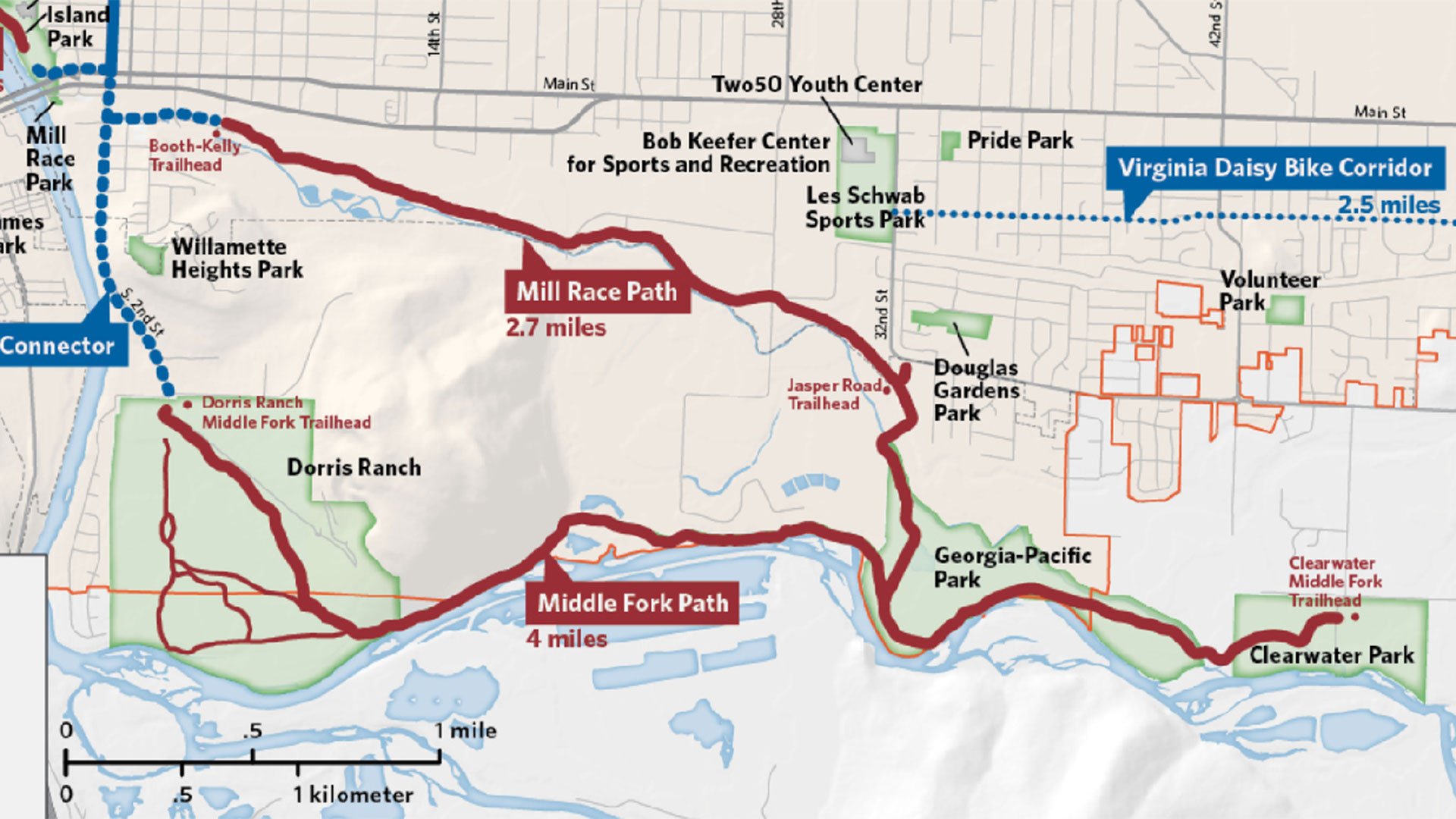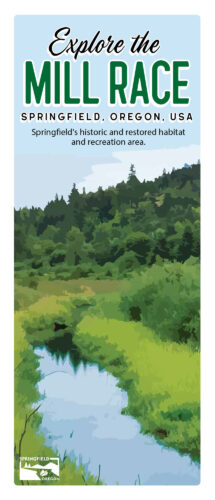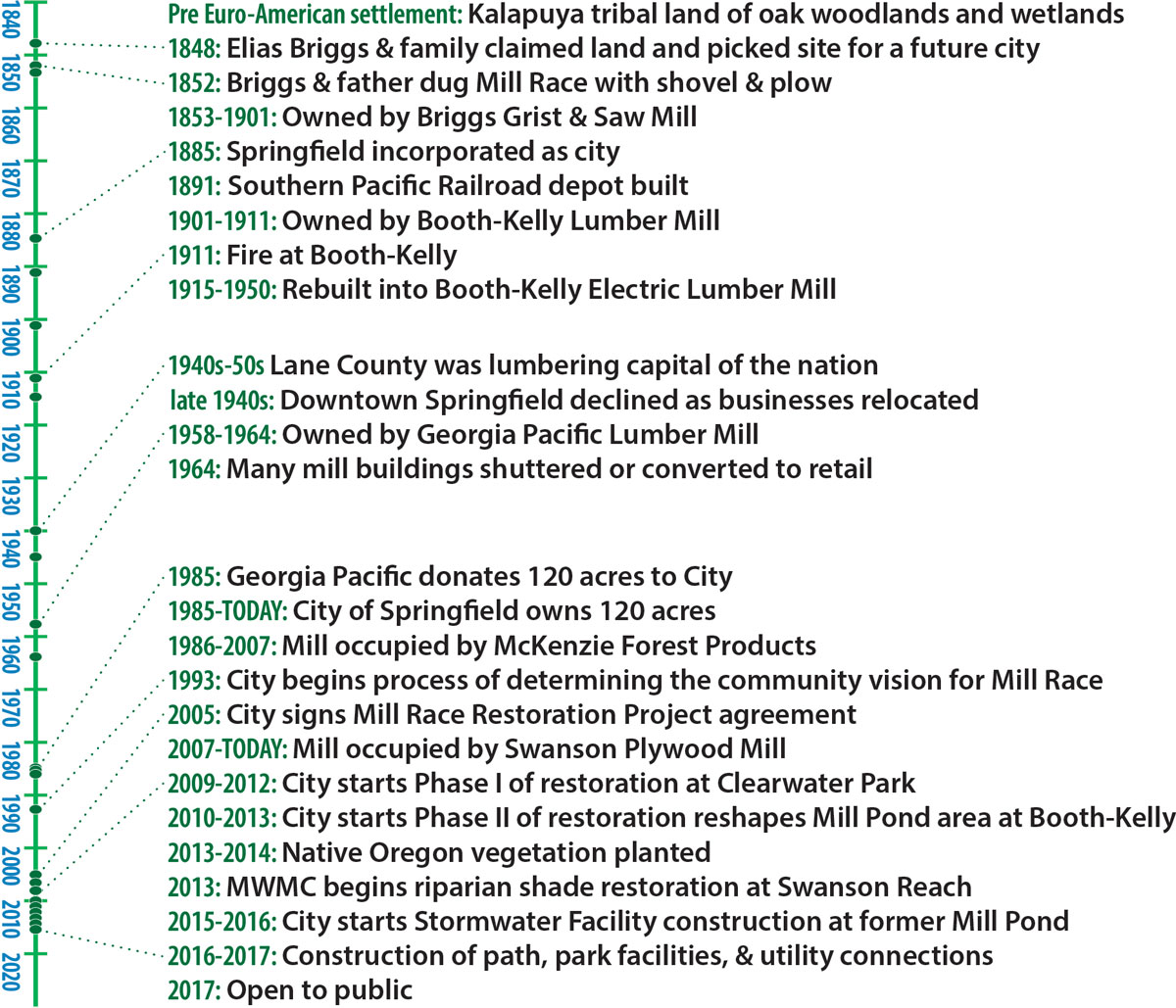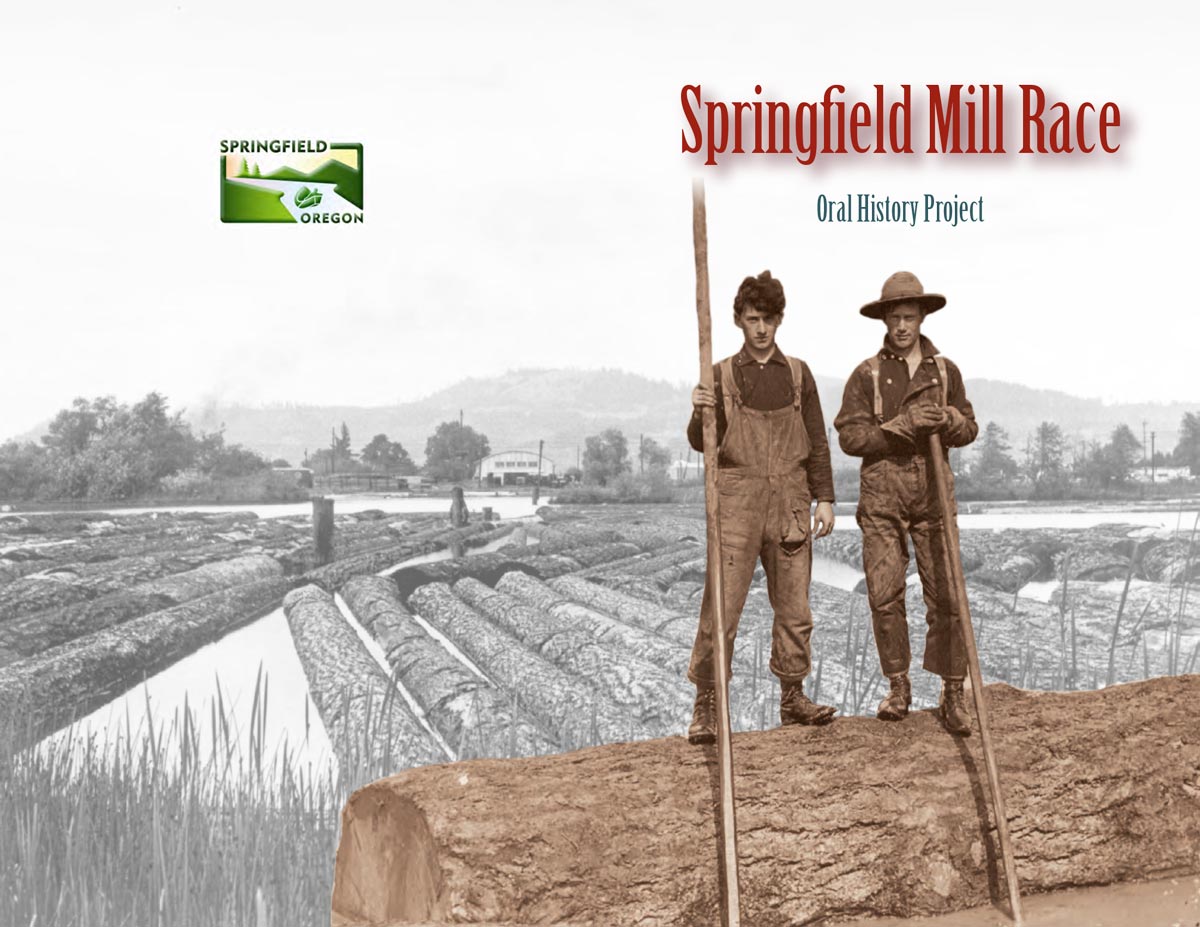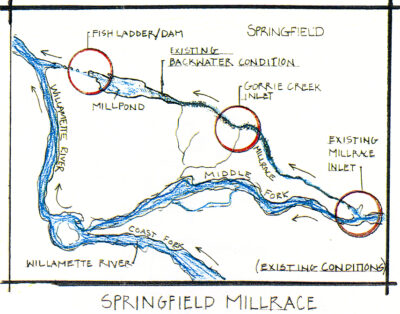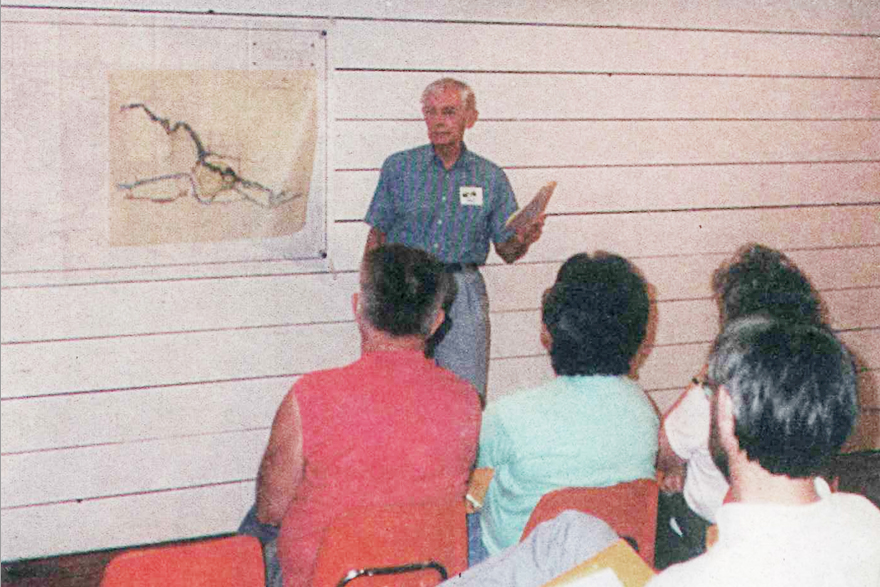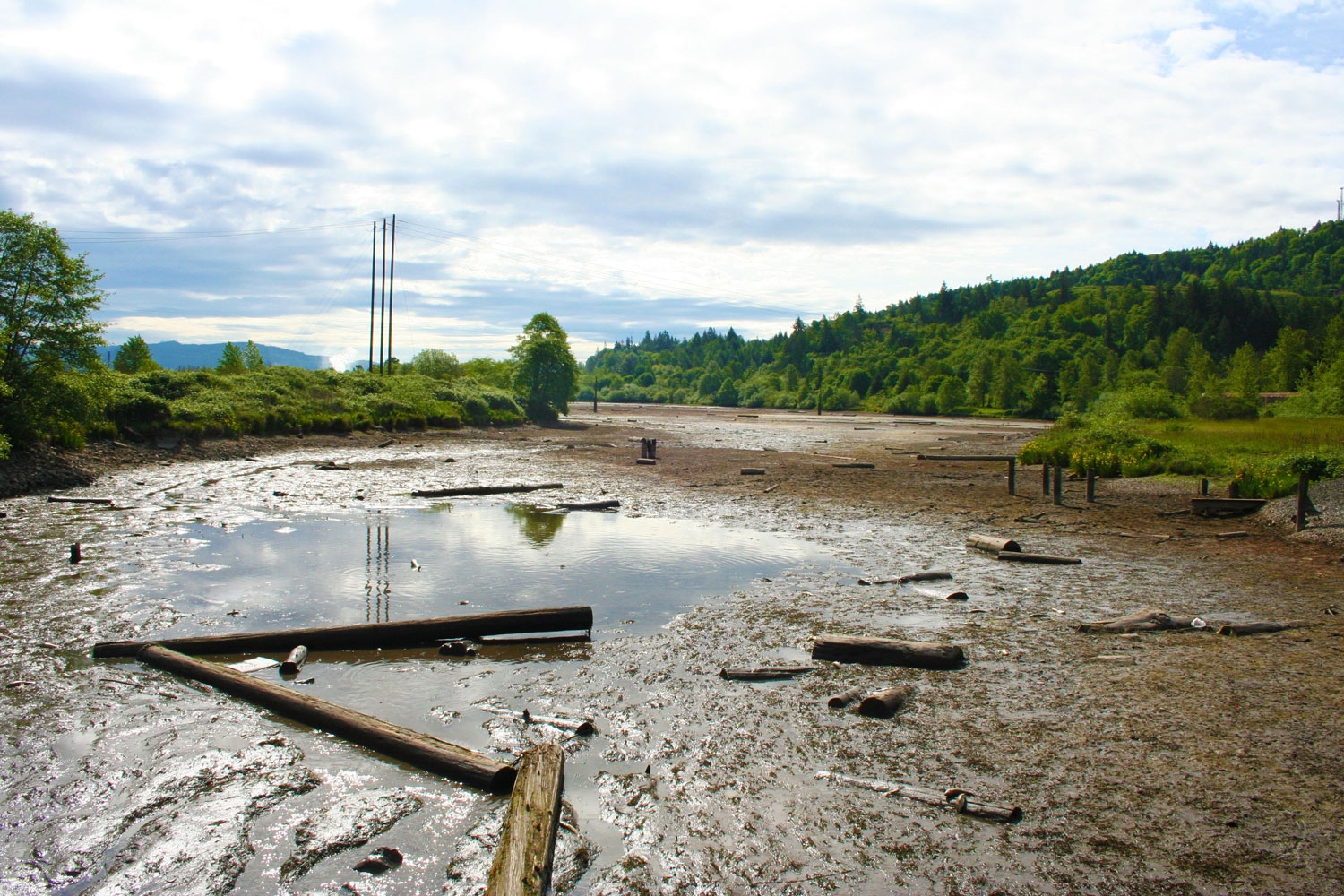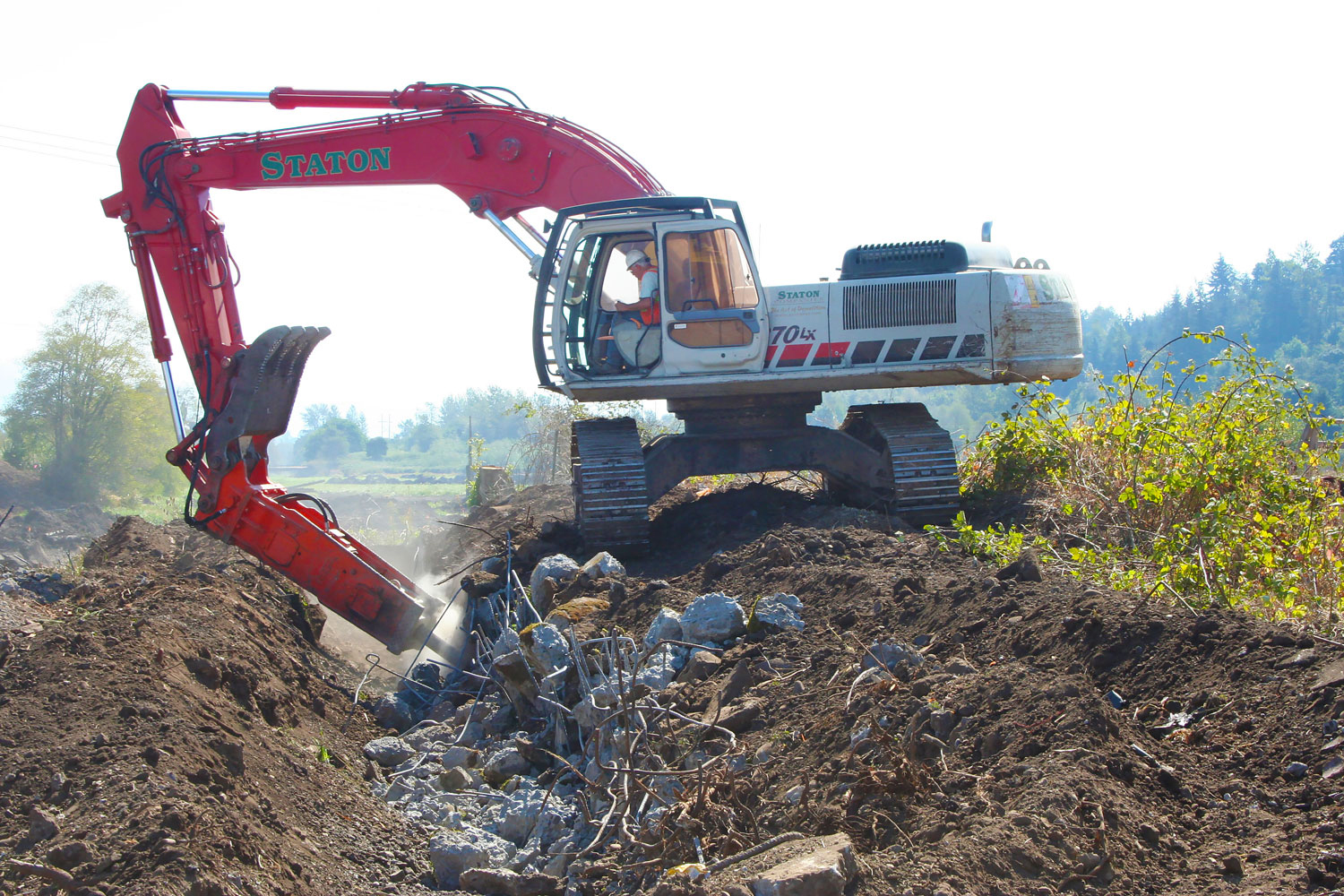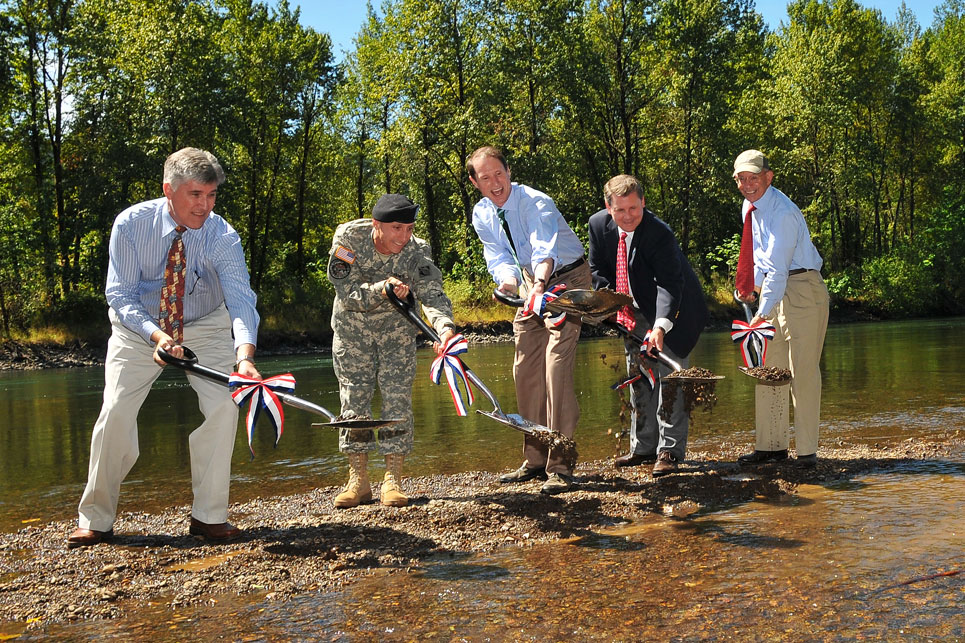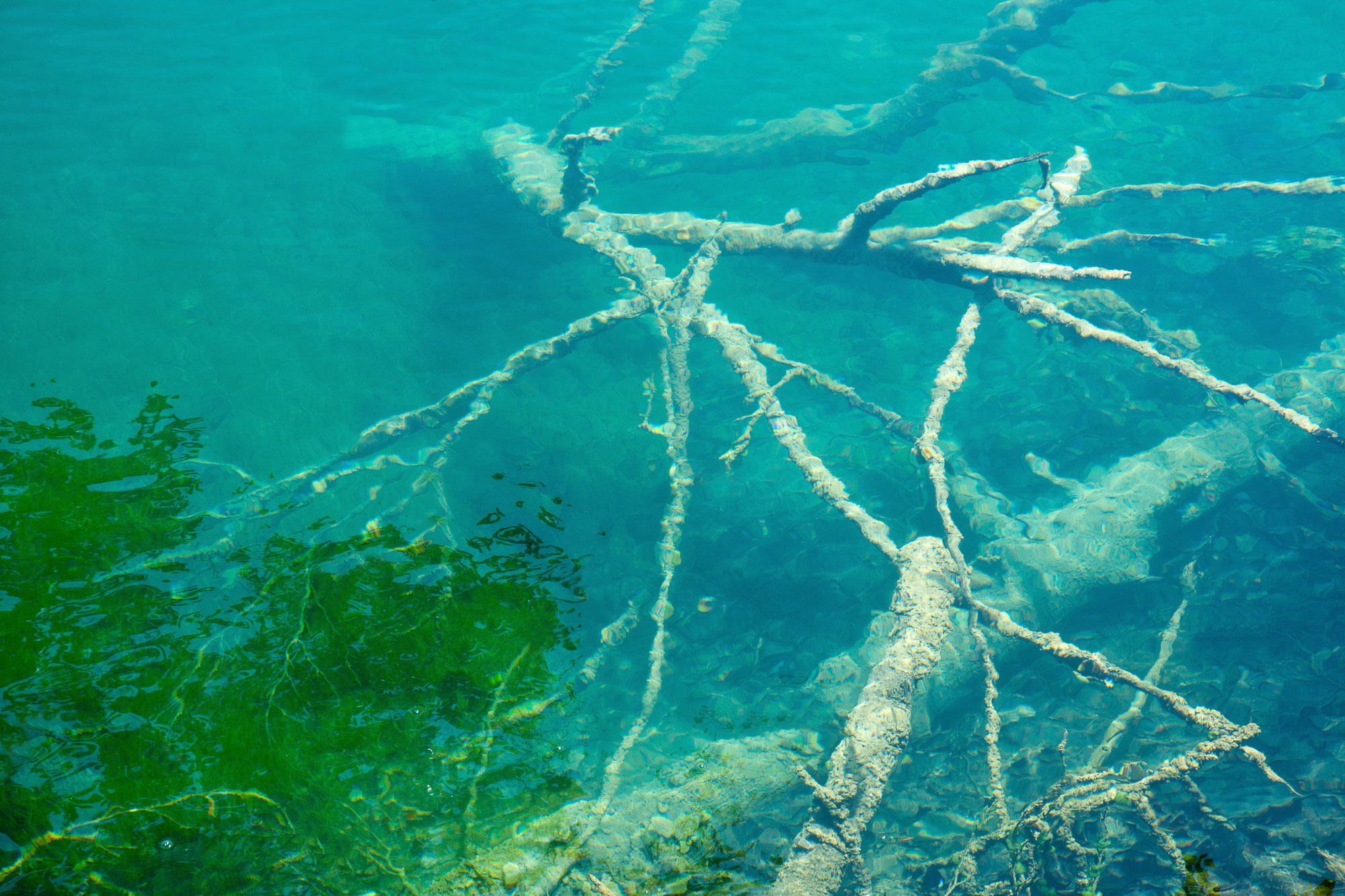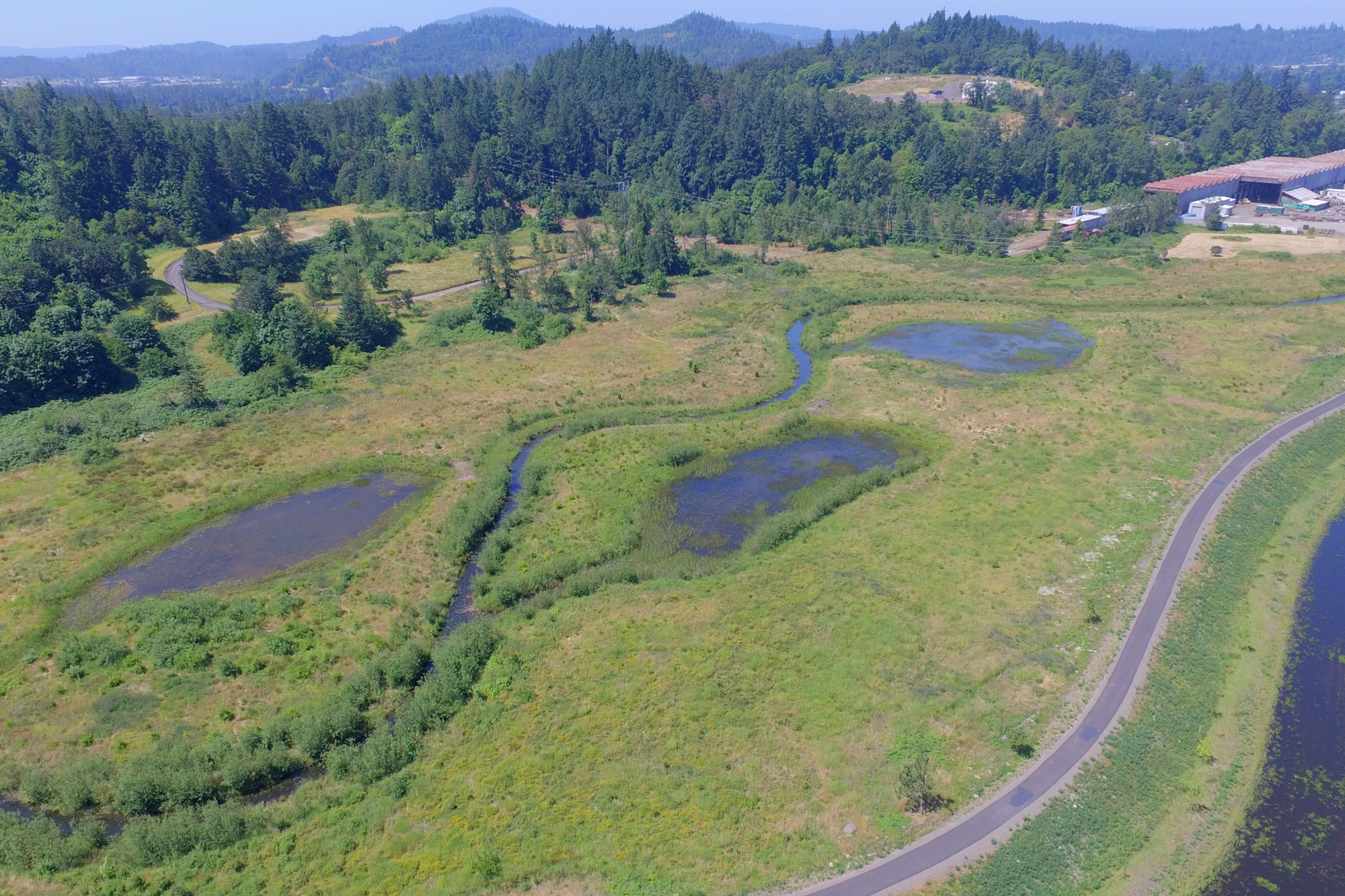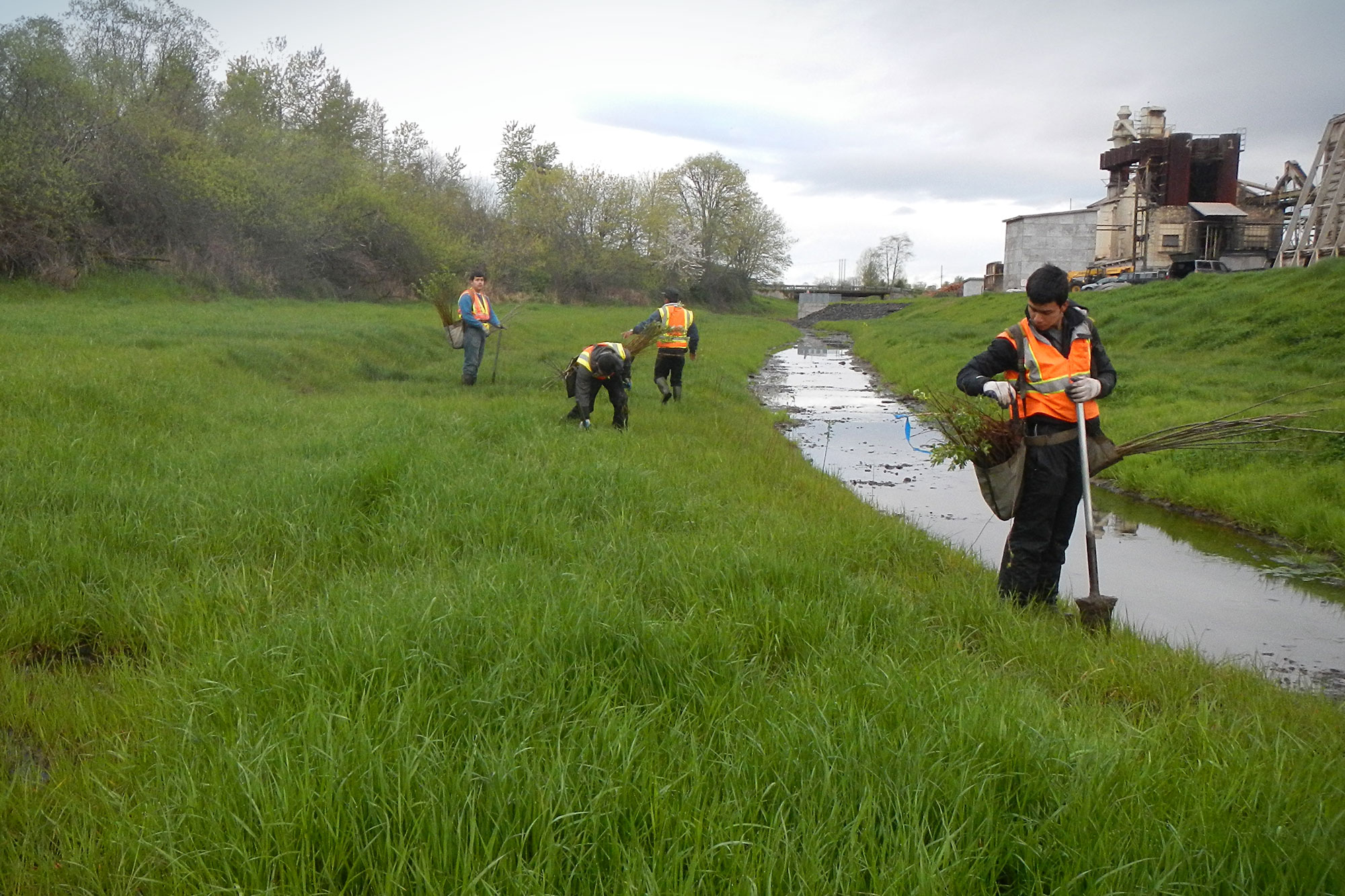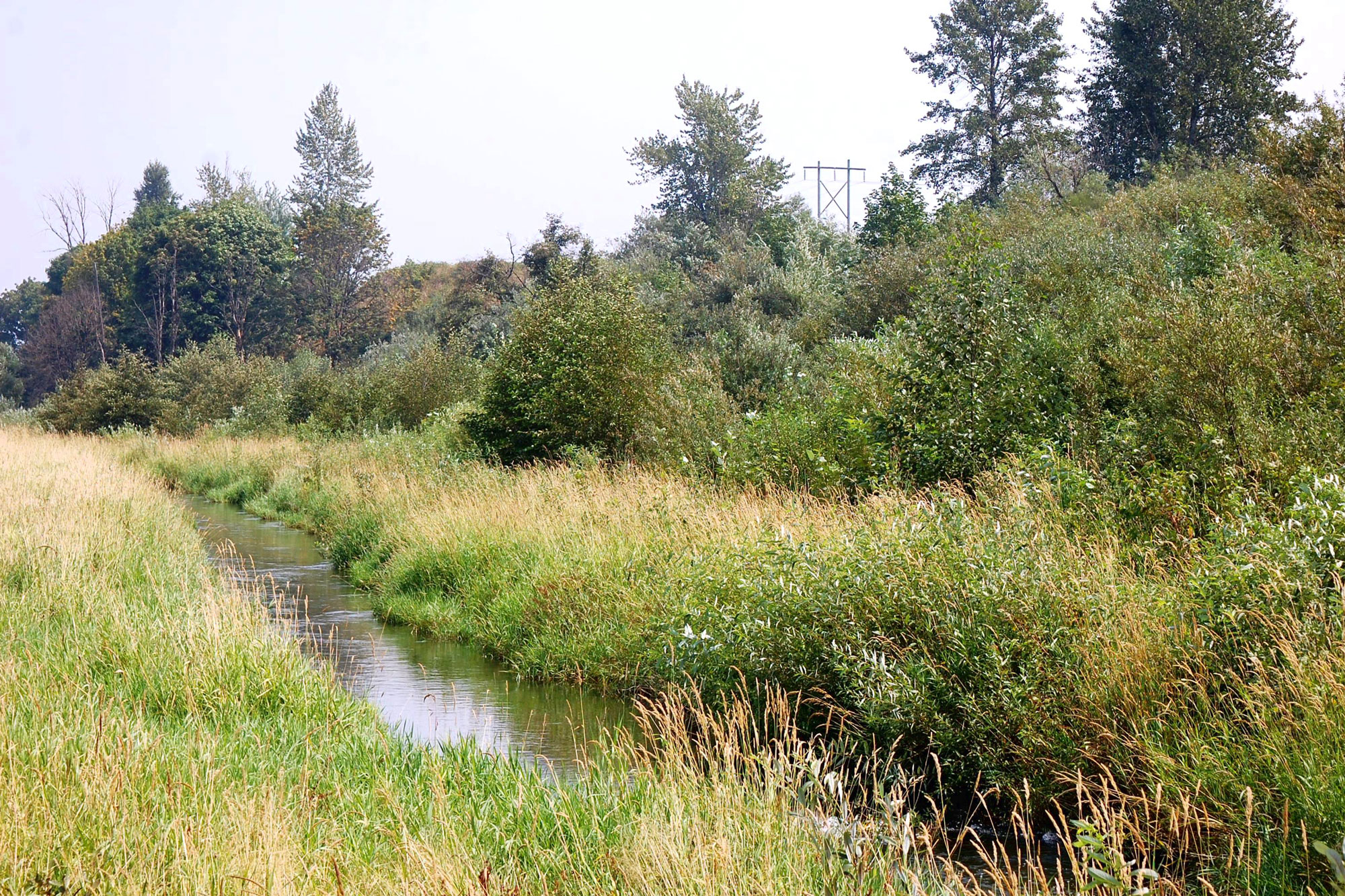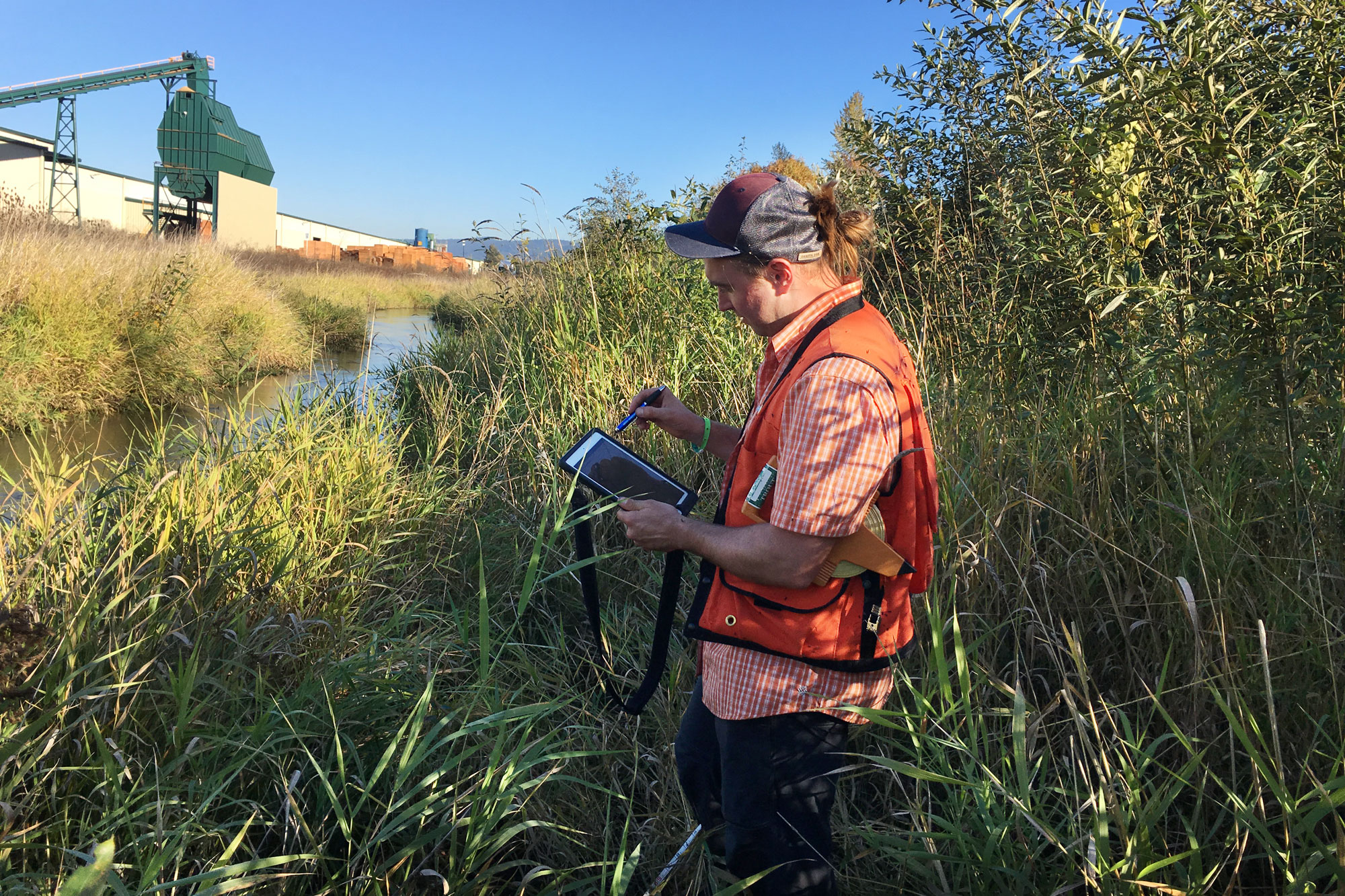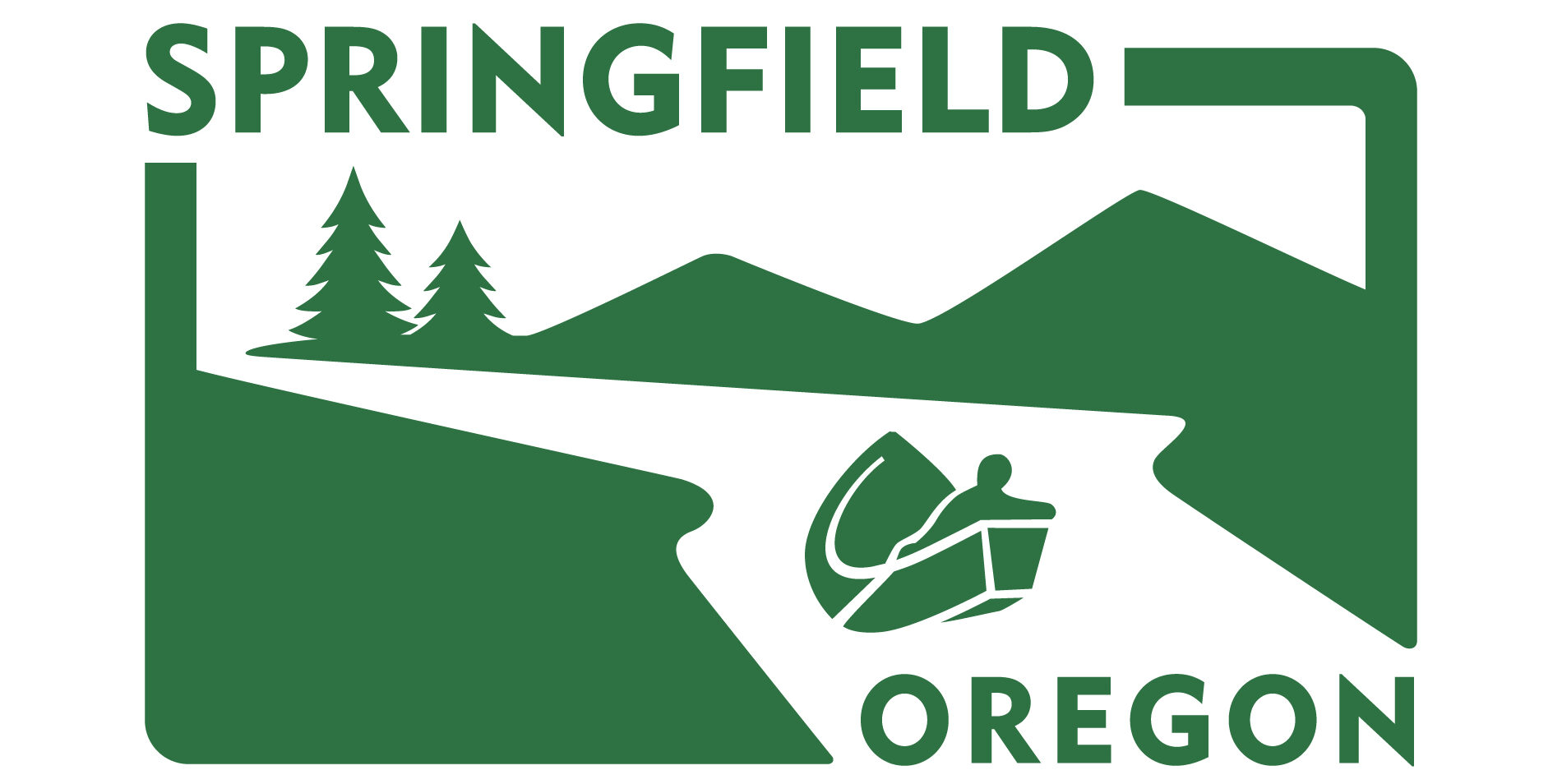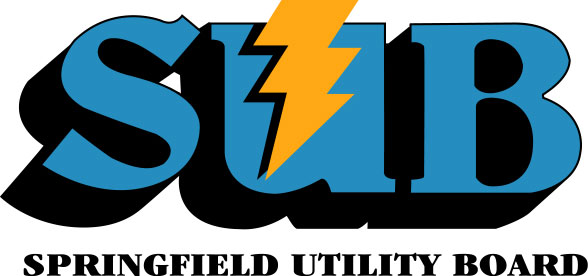Visit the Springfield Mill Race
City meets nature
The Springfield Mill Race is a stream in the southernmost region of the Willamette Valley. This part-natural, part-constructed channel started as a natural offshoot of the Willamette River and then was widened and deepened in 1852 to carry logs and provide more consistent water flow to the Springfield area. The City grew and thrived from the industries fueled by this waterway.
In the 1960s, most industrial uses ended. In the 1980s, the City received a donation of 120 acres that included the western edge of the large logging pond. Later, the City got additional land donations. In the 1990s, the City explored how to keep the area as a valuable community asset.
Today the Mill Race area offers recreation, access to nature, habitat, educational opportunities, and history. Conveniently located two blocks from downtown Main Street and running along the entire southern edge of Springfield, the Mill Race area connects Springfield to its history which is part natural, industrial, residential, and agricultural.
Springfield, including the Mill Race, is built upon the tribal homelands of the Kalapuya peoples.
Springfield is founded on water
Some basic facts about Springfield help explain why clean water is important to our growth, health, recreation, and identity:
Namesake
Springfield is named after a spring in a field, located downtown. It’s still there, underground!
Location
Springfield is between two rivers – the Willamette and the McKenzie. These rivers are our BFFs.
Economy
Springfield developed from industries fueled by the Mill Race waterway. We’re here thanks to water.
Weather
Historically, Springfield gets 40-45 inches of rainfall annually. Water management is our way of life.
Life
Springfield families and businesses need clean water. Water helps secure our future.
Things to do
The course of the Mill Race waterway can be said to reflect Springfield’s history. It begins in the forests along the Willamette River, on the eastern side of the City at Clearwater Park. Then it flows northwest past agricultural areas, industrial areas, the urban amenities of downtown, and back to the Willamette River at Island Park.
Access points
There are four easy places to access the Mill Race. These are maintained by the community’s park agency, Willamalane Park and Recreation District:
- Mill Race Park (200 S. Mill St) 0.5 acre –
Open play area, Parking, Boat ramp nearby at Island Park. - Booth-Kelly Trailhead to Mill Race Path (307 S. 5th St.) 2.7 miles long –
Parking, Bike racks, Trailheads, Large stormwater treatment pond. - Jasper Road Trailhead to Mill Race Path (3202 Jasper Road) –
Parking, Bike racks, Restrooms, Trailheads, Large stormwater treatment pond. - Clearwater Park with trailhead (2400 Clearwater Lane) 65 acres –
Boat ramp, Disc golf course, Fishing, Natural area, Parking and Equestrian parking, Restrooms, Trails, Equestrian trail access, Viewpoints.
Other things to do while you visit
Click the [+] boxes below for more info.
- Antique on Main Street
- Explore the Springfield Oregon History Museum (FREE)
- Disc golf at Clearwater Park
- Mini golf at Camp Putt
- See local art at 32 downtown locations: murals, sculptures, galleries, and more
- Shop or eat in downtown Springfield – Main Street is only 2 blocks from the Booth-Kelly Trailhead
- Tour the 31 Upstream Art storm drain murals
- Walk the 2nd Friday Art Walk
- Explore Mt. Pisgah Arboretum
- Along either the McKenzie River or the Willamette River:
- Fish
- Boat or float
- Bike or mountain bike
- Hike or walk
- Bird watch at the Thurston Hills Natural Area
- Hike Pre’s Trail, which celebrates the Oregon Olympic track star
- Ride equestrian trails
- Swim indoors at Willamalane Park Swim Center or Splash! at Lively Park
- Walk, bike, or skate at D-Street, Island Park, Doris Ranch, Jasper Creek, or Clearwater Park
Highlights at the Mill Race
The Mill Race provides:
- Abundant clean water.
- Distinct urban & rural landscapes.
- Access for fishing & boating.
- Trails for equestrians, bicycles, pedestrians.
- Historic and interpretive opportunities.
- Economic revitalization.
- Preservation of natural areas.
- Fish migration area.
- Protection of groundwater resources.
Who appreciates the Mill Race?
Anglers • Birders • Entomologists • Researchers • Botanists • Historians • Students of science and biology • Engineers including civil, structural, and environmental • Neighbors • Downtown businesses • Water users including families, farmers, and breweries • Water industry experts including drinking water, stormwater, and wastewater • Watershed protection groups • Volunteer groups • Cities downstream including Eugene, Salem and Portland
Click the [+] boxes below for more info.
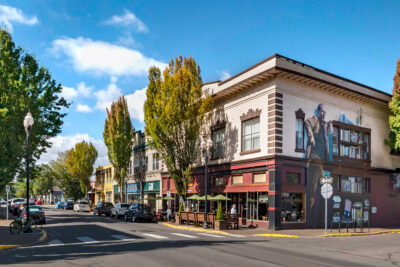
Downtown Springfield is along Main Street, which is two blocks from the Booth-Kelly Trailhead, at the western end of the Mill Race Path.
Mill Race visitors have free parking and easy access to restaurants, shopping, and City services. Meanwhile, anyone in the downtown area can pop over to the Mill Race for quick respite or exercise.
The location is unique for its close relationship between urban land and habitat land, local humans and local wildlife.
The large amount of earthworks during the Mill Race restoration left much dirt exposed. Springfield took advantage of this rare opportunity to plant native vegetation before invasive species were established.
In 2013-2014, more than 4,000 trees and shrubs were planted along the Mill Race and more are added every year. Native Oregon species were used, to create a diverse habitat. Wildlife need water, but many species also need upland habitat close to water. The western pond turtle is an example, as they nest and lay eggs in uplands. The restored Mill Race area provides both.
Trees – big leaf maple, incense cedar, Oregon ash, Ponderosa pine, and red alder.
Shrubs – black twinberry, Douglas spirea, Nootka rose, Pacific ninebark, Pacific willow, red-osier dogwood, Sitka willow, tall Oregon grape, and twinberry honeysuckle.
Flowers & herbs – American water plantain, common camas, creeping spike rush, fireweed, large-leaf lupine, ovate spike rush, slough sedge, wapato, and western yarrow.
Caged trees
One happy complication is that beavers have moved in to the Mill Race. Their dams are helpful for slowing the flow of water and improving fish habitat, yet beavers have cut down our newly planted trees. The cages around Mill Race trees are to discourage the beavers.
Volunteer to help plant
Planting projects continue at the Mill Race every year. To volunteer as an individual or to create a service project for a group, contact Springfield’s Stream Team.
Visitors have opportunities to learn about the Mill Race during their visit:
- Sign installations at the beginning of the Mill Race Path show history, select native plants, the habitat restoration project, and the stormwater pond project.
- Boulders set in concrete along the parking lot at the Booth-Kelly Trailhead were retrieved during the 2010’s excavation of the Mill Race pond. These are a reminder of the massive earthworks it took to convert this formerly industrial area back to a natural space.
- The trailhead parking lots contain green infrastructure. Planted areas, called rain gardens, receive runoff from the surrounding pavement. The native plants help filter pollution out of the water before it soaks into the ground or flows into the Mill Race waterway. Green infrastructure features like this are becoming more common nationwide – including in Springfield – to improve waterway health.
- The lobby of Springfield City Hall, located blocks from the Booth-Kelly Trailhead (at 225 5th St.), contains a permanent display about the former Mill Pond. It includes wood retrieved during pond cleanup in 2013 and 2014.
Many creatures call the Mill Race home:
Native fish – Chinook Salmon, Cutthroat Trout, Largescale Sucker, Oregon Chub, Pacific Lamprey, Prickly Sculpin, Rainbow Trout, Redsided Shiner, Speckled Dace, Threespine Stickleback, Torrent Sculpin, Western Brook Lamprey. Non-native – Brown Bullhead, Green Sunfish, Largemouth Bass, Mosquitofish, Northern Pikeminnow, Pumpkinseed, Sunfish, White Crappie.
Birds (from most common to least common) – Cackling Goose, Violet-green Swallow, Red-winged Blackbird, Tree Swallow, European Starling, American Robin, American Goldfinch, Greater White-fronted Goose, Yellow-rumped Warbler, Mallard & Wood Duck, Cedar Waxwing, Golden-crowned Sparrow, American Wigeon, Ring-necked Duck, Barn Swallow, Lesser Goldfinch, Canada Goose, Gadwall, Wilson’s Snipe, Brewer’s Blackbird, Bushtit, Song Sparrow, Green-winged Teal, Purple Finch, Pine Siskin, Dark-eyed Junco, American Coot, Orange-crowned Warbler, Killdeer, Bufflehead, Common & Hooded Merganser, Northern Shoveler, Common Yellowthroat, Pied-billed Grebe, Ruby-crowned Kinglet, Evening Grosbeak, White-crowned Sparrow, Lazuli Bunting, and more.
Mammals – Beaver, bobcat, deer, cougar, raccoon, squirrel, and fox. Non-native – Nutria.
Amphibians – Rough-skinned Newt, Western Pond Turtle, and snails. Non-native – American Bullfrog.
Water bugs – Aquatic Beetles, Backswimmer, Caddisfly, Damselfly, Dragonfly, Mayfly, Scud, Water Boatman, and more.
History of the Mill Race
Before Euro-American settlement of the Willamette Valley, the landscape was dominated by oak savanna, upland prairies, wetlands, and oak woodlands. The native people of this region, the Kalapuya, managed the landscape with regular controlled burns to prevent encroachment by Douglas fir, and allow camas, an important food source of the Kalapuya, to flourish.
Arrival of Euro-American people in the 1840s changed the landscape in many ways, including the cessation of controlled burns by the Kalapuya. Since then the Mill Race was used primarily for recreation and the economy. Recreational uses have included fishing, boating, picnicking, swimming, and hiking. Economic uses included large operations such as waterpower, a grist (flour) mill, and lumber mills, as well as micro-economies like wood collection, log floating, and hop farming.
Restoring the Mill Race
31 years in the making
The City of Springfield received a donation of 120 acres of Mill Race land from Georgia Pacific in 1985, plus additional land donations from Swanson Mill later. The land was at risk for becoming a muddy, polluted, environmental mess, so City staff recognized something had to be done. Periodically the flow of water stopped, plus the existing Mill Pond received polluted stormwater from downtown, and already contained about 100 years of accumulated industrial debris. Additionally the Willamette River that fed the Mill Race was head cutting, which is a type of erosion that causes severe ecological damage.
On the bright side, staff saw that the area could become a major community asset due to its unique location downtown, and along the southern side of the City.
It took the City about 23 years of preparation (1985-2008) and eight years of construction (2009-2017) to turn this century-old industrial space into a habitat and public space. This decades-long undertaking was accomplished through the commitment of successive City leaders and staff who continued the work of their predecessors, plus major assistance from the U.S. Army Corps of Engineers in Portland, and others.
All worked hard in support of one vision: to make the Mill Race into a community asset.
Restoration projects
Dividing the workload into different projects and sharing them with different partners let Springfield tap various funding sources and draw on the strengths of unique experts. These projects showcase the City’s resourcefulness, excellent collaboration from the Federal to the local level, and consistent commitment to hearing-from and serving the community. Some options were explored but not implemented, and that highlights the City’s stunning ability to welcome ideas, conduct research, and pivot in the best interests of its residents.
What exists today is the result of sustained communication and teamwork, taking to heart what is practical and in the best interests of the Springfield community.
Four of the largest projects undertaken by the City were:
- Mill Race Restoration Project with Phase I at Clearwater Park and Phase II at the former Mill Pond.
- Stormwater Pond at the former Mill Pond.
- Native vegetation and shade projects at the former Mill Pond.
- Swanson Reach improvements to the water flow and native plants.
Spotlights of these projects follow:
The Mill Race Restoration Project: Habitat restored
Phase I: From a trickle to a stream
Historically, the Mill Race provided water to the lumber mill. In 2005, after years of collecting extensive community feedback on what to do with the Mill Race, the City and U.S. Army Corps of Engineers agreed to restore the area as fish habitat. There were two big hurdles: the shape and depth of the waterway was not attractive to fish, and the flow of water from the Willamette River sometimes stopped.
The restoration work started with development at Clearwater Park to widen and deepen the channel to the Mill Race, to ensure water flow year-round. Additionally, Willamalane Park and Recreation District added amenities at the existing park, attracting thousands of residents every year.
Phase II: From industrial pond to habitat haven
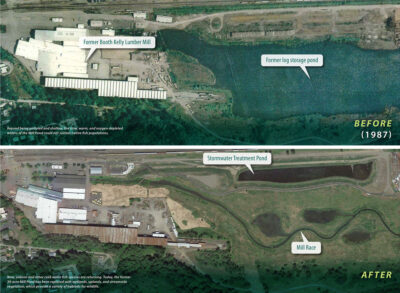
The Mill Race Restoration Project drained the old Mill Pond and transformed it into a space humans and wildlife can enjoy.
For more than a century the land between the railroad and the nearby hills south of Springfield contained a wide, shallow Mill Pond. Designed to store floating logs, and after decades of use, the pond was clogged with debris, silt, and pollution.
Here, a new channel was dug to receive the increased water flow from the Willamette River. The channel twisted back and forth which – along with gravel and wood placed on the bottom of the watercourse – created eddies and stretches of deeper, cooler water, that are great for native fish species. Today that area is a vibrant, natural wetland habitat.
Converting an industrial pond into a healthy wetland habitat presented big challenges:
- Demolishing a dam.
- Disposing contaminated soil and industrial debris.
- Reshaping the wide, shallow pond into vernal wetland pools.
After workers removed those obstacles, the task of creating diverse habitats began:
- Earthmoving equipment rerouted the drained Mill Pond into a more natural, meandering stream.
- The rest of the pond was converted to various types of wetlands.
- Finally, the entire 30 acres of the former pond were replanted with native trees, shrubs, and wetland vegetation. A variety of vegetation was important, to provide habitats for many types of wildlife.
Many public agencies collaborated on the planning and funding of the restoration. The ceremonial groundbreaking at Clearwater Park was done by (left to right): Greg James of Willamalane, Col. Jose L. Aguilar of the U.S. Army Corps of Engineers, Ron Wyden of the U.S. Senate, Springfield Mayor Sid Leiken, and Peter DeFazio of the U.S. House of Representatives.
The Mill Race Stormwater Pond: Water cleaned
Working hand-in-hand with nature
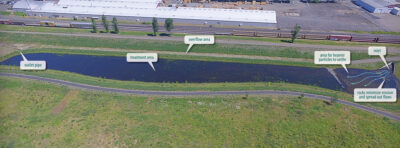
The stormwater treatment pond at the Booth-Kelly side of the Mill Race receives water from downtown Springfield on the right, has ample space for sediment to settle, and drains on the left. This photo was taken before plantings had filled in.
Alongside part of the Mill Race path near the Booth-Kelly Trailhead is a long, narrow waterbody located between the railroad and the Mill Race Path. It may look like an ordinary pond, but something special is happening there! Smart engineering and native plants are working together to clean stormwater runoff.
Built in 2015-16, this pond is one of the largest water quality treatment ponds in the region. Its construction was made possible by a rare combination of factors: the land was already owned by the City, the natural hydraulics in the area make it possible, and funding for stormwater upgrades was already available.
Cleans urban runoff
In the summer, Springfield experiences several weeks with no rain. During that time, a layer of pollutants builds up on the surfaces across the city – roads, sidewalks, roofs, and parking lots. These pollutants include each tiny amounts of oil and brake pad dust from each passing car, lawn fertilizer, weed killers, small bits of trash, and even pet waste.

What can we do to keep water clean? We can practice natural gardening, pick up pet waste, and immediately stop vehicle leaks and spills.
When the rain finally comes it may seem that the first big downpour has a cleansing effect, but in reality it washes pollutants from our roads into our waterways.
This stormwater pond is designed with the ‘first flush’ in mind. It accommodates a large volume of water flowing in from the downtown area, plus the pollutants that might come with it. The pond’s long shape slows stormwater down and lets pollutants settle to the bottom. Plants take up nutrients like nitrogen and phosphorus, preventing them from polluting the river.
Tests show the water leaves this pond cleaner than when it entered.
Native vegetation planted: Keeping it cool and local
Made in the shade
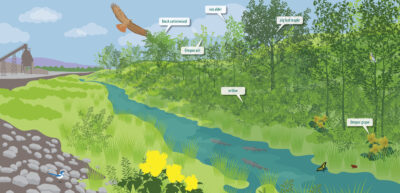
This illustration shows (left) the present-day mill and Mill Race Path, (center) the Mill Race waterway along the middle, and (right) the best placement for plants on the south side of the channel.
The trees and shrubs planted along the south side of the Mill Race keep the water (and salmon habitat) cool by shading it from the warm afternoon sun. Prior to the Mill Race restoration project, the temperature of the exposed water was unhealthy for native fish.
Purposeful placement
The native trees and shrubs provide shade, food, and habitat for fish and other important life for a healthy stream ecosystem, such as birds, insects, and amphibians.
This site continues to be monitored to ensure continued water quality improvements.
Swanson Reach: Additional shaping and shading
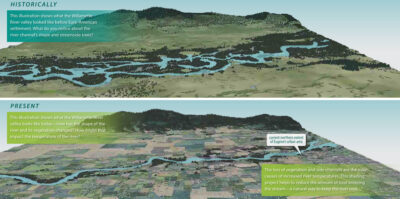
Historically the river had several channels surrounded by many trees. Today the river has one channel with few trees and settled land all around.
The Mill Race restoration agreement between the City and the U.S. Army Corps of Engineers addressed restorations at Clearwater Park and the former Mill Pond, but not along a section along Swanson Mill, called Swanson Reach. A goal of the restorations was to create habitat for fish and they need cool water to survive, but in that area the water was too shallow and wide to stay cool.
In 2014 our wastewater agency, the Metropolitan Wastewater Management Commission (MWMC), undertook the Swanson Reach shading project to lower the temperature of water in the Mill Race and reduce the community’s overall impact on the Willamette River.
Future of the Mill Race
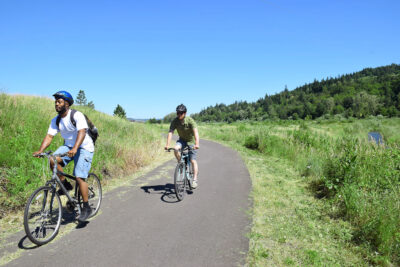
Bicyclists on the Mill Race Path near the Booth-Kelly Trailhead.
Future plans for the Mill Race include:
- Continued recreation and education at the site. Educational options include the natural world, engineering, and history.
- Continued habitat development, including planting native vegetation and removing invasive plants.
- Creation of a lower Mill Race path from the Booth-Kelly Trailhead to Island Park. This is the last remaining part of the waterway that has no access to a multi-use trail. It would create one continuous path along the Mill Race from its beginning at Clearwater Park to its end at Island Park.
Contact
Springfield Mill Race information:
- City engineering on the Mill Race: Springfield’s Development and Public Works Department
- Discover Downtown: Discover Downtown Springfield Oregon or @discoverdowntownspringfield
- Downtown business development: Economic Development Team at the City Manager’s Office
- Murals at Booth-Kelly: UpStream Art and the UpStream Art Virtual Tour
- Park and path information: Willamalane Park and Recreation District
- Report pollution entering the water: Stormwater Team at waterresources@springfield-or.gov or 541-726-3694.
- Riparian shade on the Mill Race: Metropolitan Wastewater Management Commission
- Security at the Mill Race: Springfield Police Department
- Springfield Oregon History: Springfield History Museum
- Stormwater ponds on the Mill Race: Springfield Stormwater Team
- Visitor’s information: Eugene Cascades and Coast
Thank you partners!
Today, the Mill Race is a community resource thanks to the participation of:
- Springfield voters and ratepayers for providing the vision and partially funding the restoration.
- Staff at the City, Willamalane, and volunteer groups that have done and continue to do annual plantings and clean-up.
- City of Springfield staff across all departments for almost 40 years of patient planning, construction, maintenance, and support of this work.
- Former Maintenance Manager Ed Black who had the vision in the 1980s. Former U.S. Army Corps of Engineers Project Manager Eric Bluhm for his commitment to the project. Former Public Works Director Susie Smith for the stormwater pond. Former Development & Public Works Director Len Goodwin who oversaw the work from 1994-2015.
- All Springfield City Council Members and Mayors from the 1980s-2010s, who continuously supported the project.
- Oregon’s U.S. Senators Jeff Merkley and Peter DeFazio for their support in the legislative arena.
- The United Front interjurisdictional team for getting funding for the stormwater facility, which resolves water quality issues and provides significant public open space for Springfield community members.
- Freshwater Trust for the planning and plantings that helped restore the area.
- Georgia Pacific and Swanson Group for donating Mill Race land to the City.
- Metropolitan Wastewater Management Commission (MWMC) for funding riparian shade projects.
- Springfield Utility Board (SUB) for collaboration in developing new drinking water systems.
- U.S. Army Corps of Engineers for the funding, designing, and construction on Clearwater Park and the Mill Race Channel.
- Willamalane Park and Recreation District (WPRD) for the multi-use path, park structures, and continued maintenance.
- Willamette Riverkeeper for assistance with plantings.


